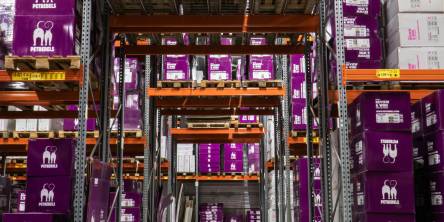How Shopping Malls Stand to Benefit from Data Visualization

The retail sector, especially shopping malls, is a critical part of the global economy. Unfortunately, they have suffered quite a bit recently, leading mall owners to look for means to help them navigate the challenges that lay ahead of them. This is where data visualization comes in; so come on and take a look at how this mighty tool can revolutionize shopping malls once again.
The compilation of data on shopping malls is not a new task. Most of the mall owners today can readily quote statistics based on revenue and rent per square meter along with building utility and maintenance costs. And, while these statistics are no doubt useful, it is particularly not helpful when thinking about what kinds of stores would recruit for empty spaces that would s benefit stores from being clustered together, or how can mall layout could contribute to footfall patterns and visitor traffic.
1. Improved revenue: One of the biggest benefits data visualization can help mall owners with is that it allows individual stores’ stats, performance, and other data points to be analyzed separately. These insights can then be combined to determine any number of combinations that are posed to deliver the best value for the mall.
2. Better profitability: Shop owners are bound by the location of their business to care about footfall. However, the onus for ensuring the best possible footfall is shared by the mall owners as well, especially since the footfall a mall receives is directly related to rents, profitability, etc. In this context, data visualization can help by combining the might of solutions such as ads, amenities, coupons and indoor maps, to gain the requisite insights to achieve better profits for the mall.
3. Cut down vacancies: Ensuring stores are rented is crucial to both brands, other stores in the mall, and, of course, mall owners. Think about it — having empty spaces in a mall for too long is bound to take a toll on customers’ opinion of the mall and, thus, cut down the footfall the given mall receives. So how can shopping malls go about dealing with vacant stores? With help from data visualization, of course — this handy tool can help companies present easily comprehensible information, such as available stores, the performance of other stores in the mall, etc., to prospective renters. Such visualized data superimposed over the mall’s indoor map can help the sales team achieve targeted outcomes.
4. New revenue streams: There is no denying that a shopping mall is beaming with potential when it comes to possible sources of revenue. There are provisional stalls, seasonal displays, special event spots, etc. but for them to serve as effective revenue streams, shopping malls must also be able to get their placement just right. Data visualization can help in this context by providing an indoor map that identifies factors such as stores that may be best in sync with the intended display or specific areas which receive low foot traffic and could use a boost or some such.
The coronavirus pandemic came knocking on the door a few years ago and turned the world of shopping malls, along with various other industries, upside down. However, as the world gradually gets back on its feet, companies that run shopping malls are starting to realize that it is not business as usual, i.e. customers' demands and expectations as well as how the market goes about serving said customer expectations has changed considerably. In such a cut-throat market, data visualization remains among the top choices of tools that can help companies successfully navigate the complexities of the market and achieve their goals. If you too want to be able to do that, it is time you got in touch with a data visualization service provider.
Similar Articles
For modern businesses to thrive, ensuring the effective management of inventory stands has become vitally important. Inventory management stands as a cornerstone of success. And the emergence of the Internet of Things (IoT) has introduced a new era of connectivity and efficiency across diverse industries.
Do you know what the following e-commerce companies have in common: Amazon, Walmart, eBay, and more? All of these e-commerce companies' apps make use of Java. Java is decidedly among the leading choices of programming language for e-commerce applications because it offers a world of benefits; for example, since Java code can be run on any platform with a Java Virtual Machine (JVM), users of e-commerce apps made with Java can access the said apps on a variety of devices.
Nikola Tesla in 1926, once described what is now called a mobile phone as a telephone that can fit into one's “vest pocket.” As otherworldly as that idea was then, nearly a century later, the reality is even more astounding.
Given the staggeringly high amounts of data being generated worldwide every single day, it ought to come as no surprise that organizations often struggle to pick the right tools to help them effectively harness the potential of all their data.
Managing properties can be a difficult task with the right tools. Property owners must find and use the best property management software. It can be a long and tedious process as there are many options in the property management software market.
In the ever-evolving financial services landscape, industry challenges are numerous and complex. From stringent regulations to rapidly advancing technology and changing consumer expectations, financial institutions face many obstacles.
The human learning capability is a great resource for helping technology evolve and grow, breaking boundaries, and creating new ones. Emulating the ability of humans to learn at a gradual but retentive pace, Machine Learning is the latest power monster that is redefining human-machine interaction.
In the ever-evolving landscape of low-code development, Microsoft's Power Platform stands out as a powerful tool for building custom applications. In today's dynamic digital landscape, creating and managing web pages is no longer the exclusive realm of professional web developers
In the data-driven business world, where information is of utmost priority, organizations are increasingly turning to data warehousing and data marts to harness the power of their data. These data management solutions are pivotal in transforming raw data into actionable insights.









